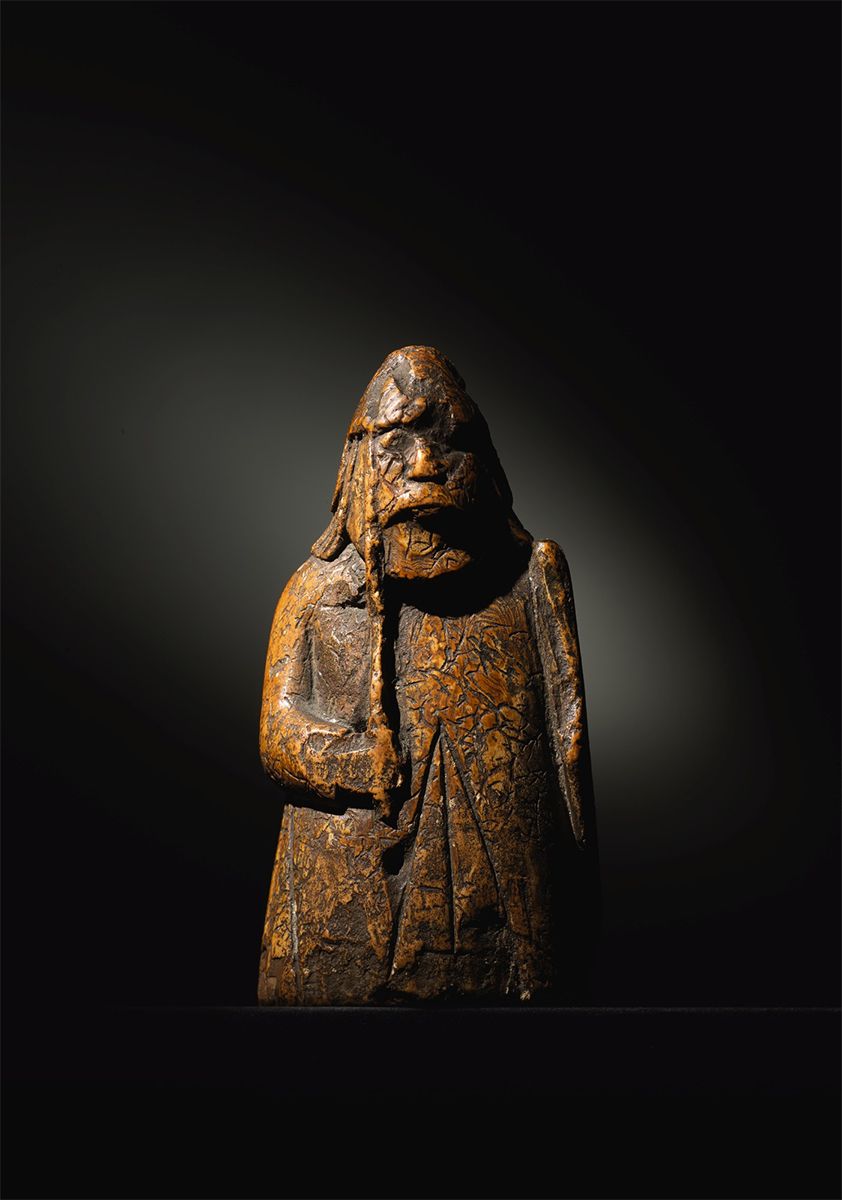
Ancient Chess Piece Bought For £5, Sold For £735,000
An ancient chess piece kept in a drawer for 55 years and originally bought for £5 was today sold at auction for £735,000 (U.S. $927,062, or 820,232 euro). It is almost certainly one of the famous Lewis Chessmen that date from the late 12th or early 13th century.
The piece, 8.8 cm (3.5 inch) high and made of walrus ivory, is named warder. It represents a rook. It is a standing, bearded warrior holding a sword in his right hand and a shield in his left. The many similarities make it almost certain that it is part of the famous Lewis Chessmen, found on the Isle of Lewis in Scotland's Outer Hebrides in 1831.
The piece was kept in a drawer for 55 years after an antiques dealer in Scotland had bought it for £5 in 1964. Having cataloged the piece as "Antique Walrus Tusk Warrior Chessman" in his purchase ledger, the dealer must have been unaware of its historic significance and value.
The family of the now deceased dealer brought the piece to Sotheby's for auction. "It was stored away in his home and then when my grandfather died my mother inherited the chess piece," a spokesperson for the family (who wants to remain anonymous) told CNN.
"My mother was very fond of the chessman as she admired its intricacy and quirkiness. She believed that it was special and thought perhaps it could even have had some magical significance," said the spokesperson.

Sotheby's Alexander Kade, specialized in European sculpture and works of art, told BBC that when he first saw the piece as the family brought it for valuation, he exclaimed: "Oh my goodness, it's one of the Lewis Chessmen!"
In a press release, Kade referred to the mysteries surrounding the discovery of these ancient chess pieces: "There is certainly more to the story of this warder still to be told, about his life over the last 188 years since he was separated from his fellow chessmen, and just as interesting, about the next chapter in his journey now that he has been rediscovered."
The extensive text of the lot details at Sotheby's website discusses some of the fascinating background.
The original Lewis hoard was discovered in 1831 at Uig bay, or near Mèalasta on the Isle of Lewis by a man named Malcolm Macleod of Penny Donald. It quickly changed hands to merchants and art dealers. Eventually 82 pieces found their way to the British Museum in 1832 and the other 11 to the National Museum of Scotland in 1888.
The newly discovered piece is the first of the Lewis Chessmen to emerge since then. It has been attributed to the same 13th-century workshop that made the Lewis Chessmen, based on a close visual comparative study and in consideration of views expressed by leading academics in the field of medieval ivories. According to Sotheby's, it probably formed part of the Lewis hoard.
"The original hoard comprised 93 walrus ivory objects, which consisted of 59 chessmen: 8 kings, 8 queens, 16 bishops, 15 knights and 12 warders (rooks), in addition there were 19 pawns and 14 flat, circular games pieces (tabula) and one belt buckle. Therefore, the hoard could make four complete sets of figure pieces, with the exception of one knight and four warders."
If you ever get the chance, it's worth visiting the place were these iconic chess pieces were found -- Uig, on the beautiful west coast of the Isle of Lewis, in the Hebrides. It's in Scotland now, but it was still part of Norway when the pieces were made.
— Douglas Griffin (@dgriffinchess) November 7, 2018
(Photographed in 2012.) pic.twitter.com/8KQ2SowJIS

